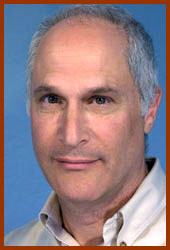Psychotherapy & Psychopharmaacology
| |
| home |
| background |
| appointments |
| therapy |
| medication |
| location |
| Therapy |
Why psychotherapy? Psychotherapy is a conversation between doctor and patient. Good psychotherapy results in positive changes in the patient's life. At first conversation might seem like a rather weak treatment method compared to medications. As it turns out, psychotherapy is often as effective, or even more effective, than medication in changing what people do and how they feel about life. In fact, people converse with each other all the time to try to influence one another's thoughts and actions. People send their children to school, read the news, watch plays and movies, listen to sermons and lectures, talk to each constantly and give each other advice. We converse because we do affect each other. Psychotherapy is a special conversation. Most conversations are about learning new things. In therapy, patients do learn new information about their conditions, or new techniques for interacting with the people in their lives. However the crucial conversations in psychotherapy are about things that people already know, perhaps too well, and about problematic things that they already do, perhaps too often. Psychotherapy discusses the troublesome patterns of thinking and behavior that the patient uses in the present, as well as the roots of those patterns in the past experience. Learning to change old patterns is harder than learning new things. Psychotherapy is designed to facilitate that change. I use several kinds of therapy. These include cognitive behavioral therapies and psychodynamic psychotherapy. I also often incorporate meditation practices in my treatments. Cognitive behavioral therapy Cognitive Behavioral Therapy, or CBT, describes a therapeutic approach based on specific forms of learning. CBT is the treatment of choice for anxiety disorders and some personality disorders. It is also effective in depression. CBT is actually the combination of two psychotherapeutic approaches: Behavior Therapy and Cognitive Therapy. Both approaches have been shown by well-controlled clinical trials to work in the treatment of anxiety disorders and depression. Cognitive therapy, the C in CBT, works by helping a patient identify and challenge distorted patterns of thinking that contribute to the persistence of his or her disorder. These “automatic thoughts” are usually self-critical statements or negative expectations of people or of the future, which seldom correspond to the patient's real situation. Systematic examination and evaluation of such thoughts often dissolves their credibility and frees the patient from their negative effects. Behavior Therapy, the B in CBT, involves changing patterns of behavior directly. Patients confront situations that anxiety or depression drives them to avoid. For example, a patient with social anxiety will be encouraged to talk with people, first in “safe” situations, and a patient with PTSD will repeatedly tell the story of a traumatic experience. I work with each patient to design a series of graded challenges that the patient can complete successfully. Each success increases the patient's confidence in facing the next challenge. Soon patients are relaxed and comfortable in situations where they couldn't even have imagined themselves when they began. Progress in CBT depends on mechanisms of learning, so it always involves homework. I work with my patients to design exercises that will be effective, and coach them to help them complete them. The more homework a patient does, the faster he or she progresses. If it's difficult for a patient to do homework, I help him or her troubleshoot whatever may be getting in the way. Psychodynamic psychotherapy While CBT for anxiety and depression focuses almost exclusively on present thoughts and behavior, psychodynamic psychotherapy focuses on patterns of thought and behavior that recur through a patient's life. I use this form of therapy for problems at work and home that don't fit into the narrower categories of anxiety and mood disorders. Patients often come with complaints that they aren't doing as well as they would like at work or that their friendships, marriages or love life are unsatisfying. In psychodynamic psychotherapy I work with the patient to identify similarities between the patterns of relationships to family members from childhood and patterns in current relationships to friends, loved ones, and even to the therapist. Sustained examination of these patterns reduces the patients' tendency to repeat them. Well designed homework exercises can often facilitate progress in psychodynamic psychotherapy. Meditation Meditation practice can help patients disentangle themselves from their own thoughts and emotions, and create a clear space from which they can observe their actions and those of others. This is particularly helpful when anxieties or negative thoughts cause so much internal distraction that it is hard for a patient to focus on what is actually going on at work or at home. Although it takes substantial meditation practice to achieve some control in the midst of emotional events, meditating during quiet periods of the day begins the process of training oneself to step away from the ongoing torrent of thought and emotion. I therefore work with most patients to choose and practice a suitable meditation technique. |
|
